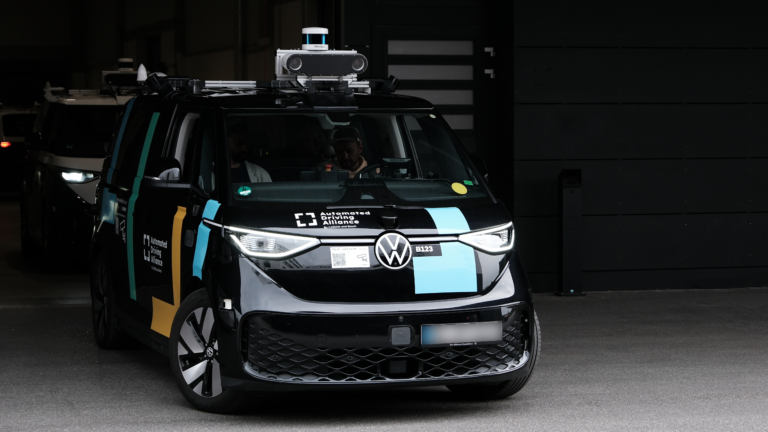Bosch and Cariad have announced that they are expanding their collaboration in the Automated Driving Alliance by “making full use” of artificial intelligence in the co-development of their software stack for Level 2 and 3 assisted and automated driving.
This should produce “more powerful, more intelligent driver assistance systems that act as naturally as a human driver”, the companies said. The software stack will cover all essential cognitive tasks of perception, interpretation, decision-making and action.
Bosch and Cariad want to make automated driving available to millions of private motorists. Their goal is for the new driving functions to enable drivers to take their hands off the steering wheel in various driving situations. The first versions of these have been implemented in test fleets and are now being systematically trained and further developed daily with large amounts of data. The companies aim to have a software stack for application in production projects available from mid-2026 onward.
The Volkswagen Group plans to integrate automated driving functions developed by Bosch and Cariad into its latest architecture for software-defined vehicles. Bosch will also make this solution available to other manufacturers worldwide.
Cariad CEO Peter Bosch said, “We’re demonstrating that the German automotive industry has mastered the key technologies of artificial intelligence and automated driving. With the expertise of our developers and engineers, we are securing an integral part of Europe’s digital sovereignty. Our goal in the Alliance is to make the convenience and safety of automated driving systems accessible to as many people as possible so that they can gain valuable time when they’re in their car.”
Mathias Pillin, CTO of Bosch Mobility, added, “When it comes to getting automated driving systems onto the roads reliably and at scale, data and AI are the key. We can only rise to this challenge together if we work as equal partners and abandon ingrained mindsets. Together with Cariad in the Automated Driving Alliance, we’re showing how this can work.”
Use of AI in all technology components
The Automated Driving Alliance has been using AI since the partnership began, but is now being used along the entire software technology chain.
The alliance is developing an AI stack that analyzes urban traffic and predicts the behavior of road users using data from multiple sensors. Bosch and Cariad are advancing this technology within a modern engineering framework and hardware strategy designed to ensure scalable implementation across all vehicle models.
The development partnership aims to create all technology elements in-house, with their own source code and intellectual property. This approach enables complete technical control of the source code and standards for data protection, cybersecurity, driving safety and transparency. This is designed to ensure that the AI’s decisions and actions remain safe, traceable and explainable.
The software stack also lays the groundwork for the possible integration of multimodal AI approaches that link visual and linguistic information. Called vision-language-action (VLA) approaches, they can imitate the logical thinking and actions of humans.
Large test fleet
The AI stack will make automated driving in the Level 2 and Level 3 range even more robust, Bosch and Cariad say. Before production, its performance will be steadily improved through large-scale data collection to maximize safety and reliability. Cariad and Bosch are collaborating globally, evaluating driving functions in Europe, Japan and the USA. The development is data-driven, enabling frequent updates and optimizations to the software in test vehicles.
The technology is already being used in test vehicles such as the ID.Buzz and the Audi Q8.
In related news, AB Dynamics recently presented ClearTrack, a fully integrated object detection system for driverless robot-controlled vehicle testing, developed with sister company ABD Solutions. Read the full story here


